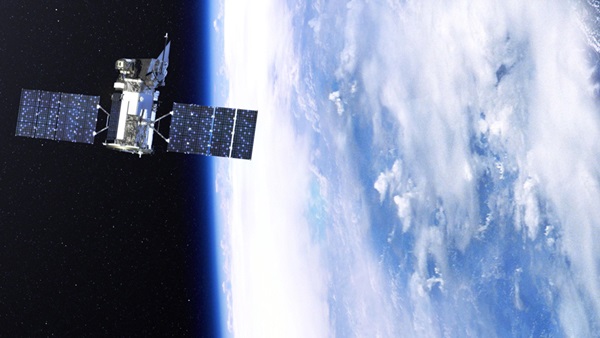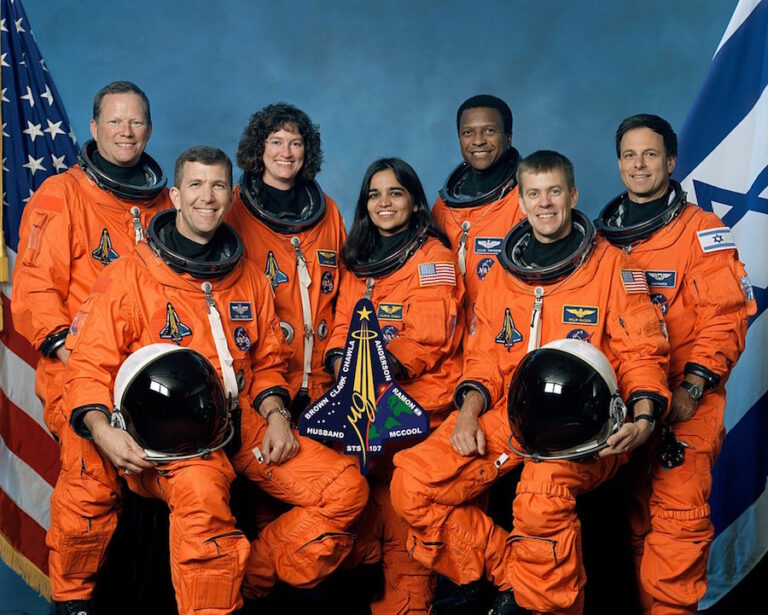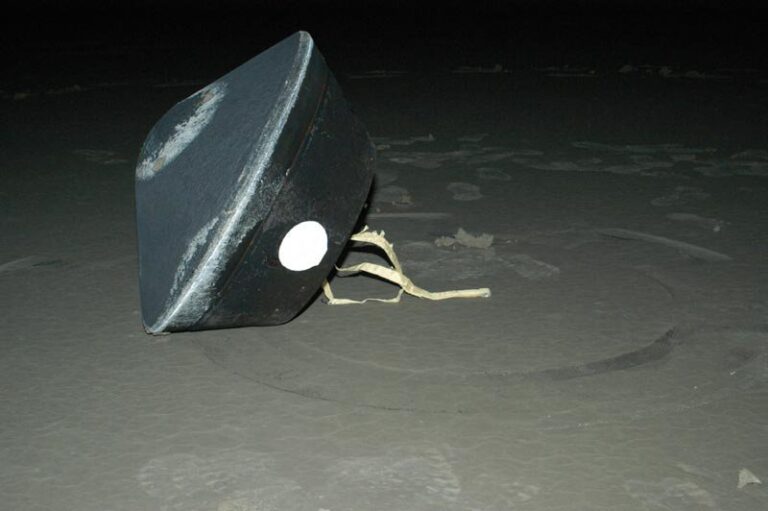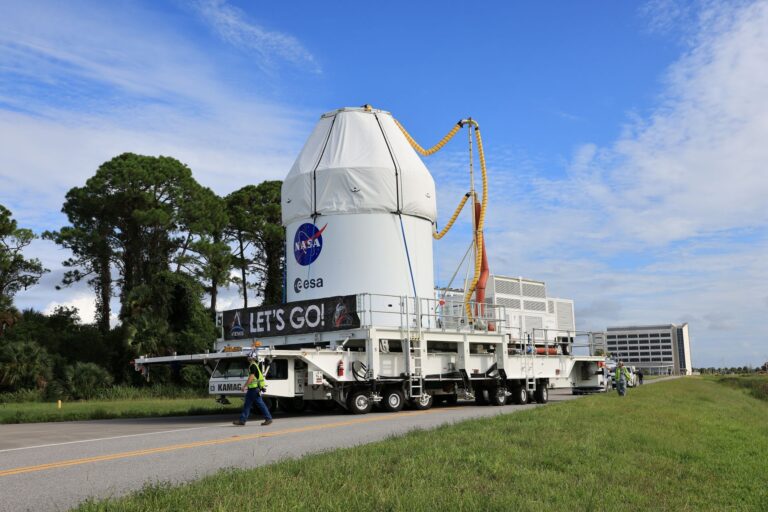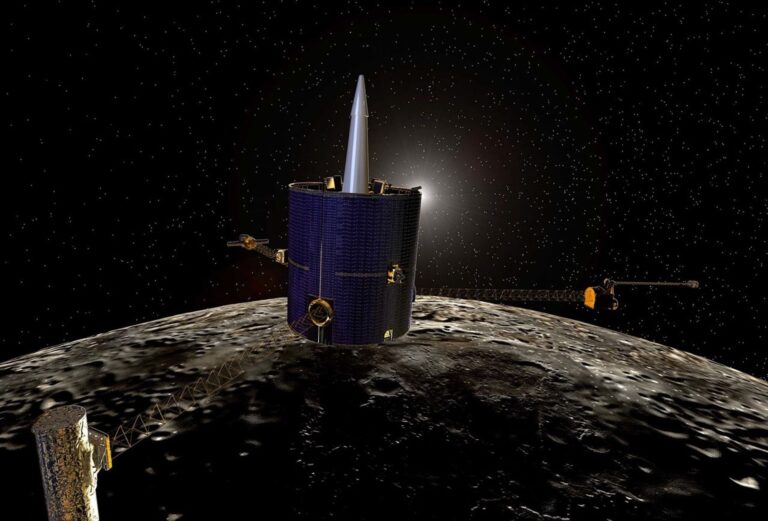Glory is scheduled to launch from Vandenberg Air Force Base in California February 23 at 5:09 a.m. EST. It will join a fleet called the Afternoon Constellation (A-train) of satellites. This group of other Earth-observing satellites, including NASA’s Aqua and Aura spacecraft, flies in tight formation.
“Glory is going to help scientists tackle one of the major uncertainties in climate change predictions identified by the United Nation’s Intergovernmental Panel on Climate Change: the influence of aerosols on the energy balance of our planet,” said Michael Freilich from NASA Headquarters in Washington, D.C. “This mission also marks the first satellite launch under President Obama’s climate initiative that will advance the United States’ contribution to cutting-edge and policy-relevant climate change science.”
Originally confirmed in 2005, Glory has been developed by a team of engineers and scientists at several government, industry, and academic institutions across the country. The Glory spacecraft arrived at Vandenberg January 11 after a cross-country road trip from Orbital Sciences Corporation in Dulles, Virginia.
“The spacecraft is in place at the launch, and all of the post-shipment inspections and electrical tests have been completed,” said Bryan Fafaul from Goddard Space Flight Center in Greenbelt, Maryland. The spacecraft will be mated to Orbital’s Taurus XL 3110 rocket next month.
Glory will carry new technology designed to unravel some of the most complex elements of Earth’s system. The mission carries two primary instruments, the Aerosol Polarimetry Sensor (APS) and the Total Irradiance Monitor (TIM). APS will improve measurement of aerosols, the airborne particles that can influence climate by reflecting and absorbing solar radiation and modifying clouds and precipitation.
TIM will extend a decades-long data record of the solar energy striking the top of Earth’s atmosphere, or total solar irradiance. APS will collect data at nine different wavelengths, from the visible to short-wave infrared, giving scientists a much-improved understanding of aerosols. The instrument, NASA’s first Earth-orbiting polarimeter, will help scientists distinguish between natural and human-produced aerosols. The information will be used to refine global climate models and help scientists determine how our planet is responding to human activities.
The TIM instrument will maintain and improve upon a 32-year record of total solar irradiance, a value that fluctuates slightly as the Sun cycles through periods of varying intensity approximately every 11 years. While scientists have concluded that solar variability is not the main cause of the warming observed on Earth in recent decades, the Sun has historically caused long-term climate changes. Having a baseline of the solar energy that reaches Earth gives us a way to evaluate future climate changes. Better measurements of total solar irradiance give scientists another way to test their climate models and understand the Sun’s longer cyclical changes and how they may impact the climate.
Glory will fly in a low Earth orbit at an altitude of 438 miles (705 kilometers), about the distance from Boston to Washington. After launch, mission operators will conduct verification tests for 30 days and then begin to collect data for at least 3 years.
Glory’s Taurus launch rocket also will carry into orbit a secondary payload: NASA’s Educational Launch of Nanosatellite (ELaNA) mission. This mission will put three small research satellites, or CubeSats, into orbit for Montana State University, the University of Colorado, and a consortium of state universities called Kentucky Space.
Glory is scheduled to launch from Vandenberg Air Force Base in California February 23 at 5:09 a.m. EST. It will join a fleet called the Afternoon Constellation (A-train) of satellites. This group of other Earth-observing satellites, including NASA’s Aqua and Aura spacecraft, flies in tight formation.
“Glory is going to help scientists tackle one of the major uncertainties in climate change predictions identified by the United Nation’s Intergovernmental Panel on Climate Change: the influence of aerosols on the energy balance of our planet,” said Michael Freilich from NASA Headquarters in Washington, D.C. “This mission also marks the first satellite launch under President Obama’s climate initiative that will advance the United States’ contribution to cutting-edge and policy-relevant climate change science.”
Originally confirmed in 2005, Glory has been developed by a team of engineers and scientists at several government, industry, and academic institutions across the country. The Glory spacecraft arrived at Vandenberg January 11 after a cross-country road trip from Orbital Sciences Corporation in Dulles, Virginia.
“The spacecraft is in place at the launch, and all of the post-shipment inspections and electrical tests have been completed,” said Bryan Fafaul from Goddard Space Flight Center in Greenbelt, Maryland. The spacecraft will be mated to Orbital’s Taurus XL 3110 rocket next month.
Glory will carry new technology designed to unravel some of the most complex elements of Earth’s system. The mission carries two primary instruments, the Aerosol Polarimetry Sensor (APS) and the Total Irradiance Monitor (TIM). APS will improve measurement of aerosols, the airborne particles that can influence climate by reflecting and absorbing solar radiation and modifying clouds and precipitation.
TIM will extend a decades-long data record of the solar energy striking the top of Earth’s atmosphere, or total solar irradiance. APS will collect data at nine different wavelengths, from the visible to short-wave infrared, giving scientists a much-improved understanding of aerosols. The instrument, NASA’s first Earth-orbiting polarimeter, will help scientists distinguish between natural and human-produced aerosols. The information will be used to refine global climate models and help scientists determine how our planet is responding to human activities.
The TIM instrument will maintain and improve upon a 32-year record of total solar irradiance, a value that fluctuates slightly as the Sun cycles through periods of varying intensity approximately every 11 years. While scientists have concluded that solar variability is not the main cause of the warming observed on Earth in recent decades, the Sun has historically caused long-term climate changes. Having a baseline of the solar energy that reaches Earth gives us a way to evaluate future climate changes. Better measurements of total solar irradiance give scientists another way to test their climate models and understand the Sun’s longer cyclical changes and how they may impact the climate.
Glory will fly in a low Earth orbit at an altitude of 438 miles (705 kilometers), about the distance from Boston to Washington. After launch, mission operators will conduct verification tests for 30 days and then begin to collect data for at least 3 years.
Glory’s Taurus launch rocket also will carry into orbit a secondary payload: NASA’s Educational Launch of Nanosatellite (ELaNA) mission. This mission will put three small research satellites, or CubeSats, into orbit for Montana State University, the University of Colorado, and a consortium of state universities called Kentucky Space.

